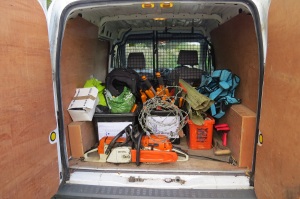A harlequin ladybird nymph photographed yesterday in the reserve by Ian Bushell.
The harlequin ladybird (Harmonia axyridis) is an invasive alien species. Originally from Asia, it was introduced into the USA during the 1990s in a well-meant attempt to control aphid populations without the use of pesticides. Once established, and without the predators and diseases of their natural habitat, harlequin ladybirds spread rapidly, soon outcompeting and endangering native American ladybird species.

1 
2 
3 
4
[1] Harlequin ladybirds hibernating inside the reserve’s noticeboard. Harlequin ladybird eggs [2], pupa [3] and multi-coloured adults [4].
They arrived in Britain in 2004 and were first identified in the reserve in the summer of 2017; that winter, thousands of the adult harlequin ladybirds hibernated inside the noticeboard [image1] at the reserve’s main entrance. We were very concerned for our native ladybirds.
In 2018, every ladybird we saw in the reserve seemed to be a harlequin but since then their numbers appear to have fallen. We have not found any further mass-hibernation sites and our native species seem to have re-stablished themselves to some degree.
Besides the harlequins, there are four species of ladybirds on our lists: the twenty four spot, seven spot, fourteen spot and sixteen spot ladybirds. We would like there to be more: if you meet a ladybird in the reserve, take its picture and sent it in for ID. We would love to know that our native ladybirds are safe and doing well.






Since we recently had our first ever infestation of black cherry aphids on one of our wild cherry trees we now are seeing an influx of ladybird nymphs on the shrubs below. They seem more orange than your photographs, is it likely they are native ladybirds?
It’s hard to tell without a picture. Unfortunately harlequin nymphs are usually more orange than the nymphs of native species. Here is a link to a webpage that might help: https://www.gardenersworld.com/plants/garden-wildlife-identifier-ladybird-larvae/